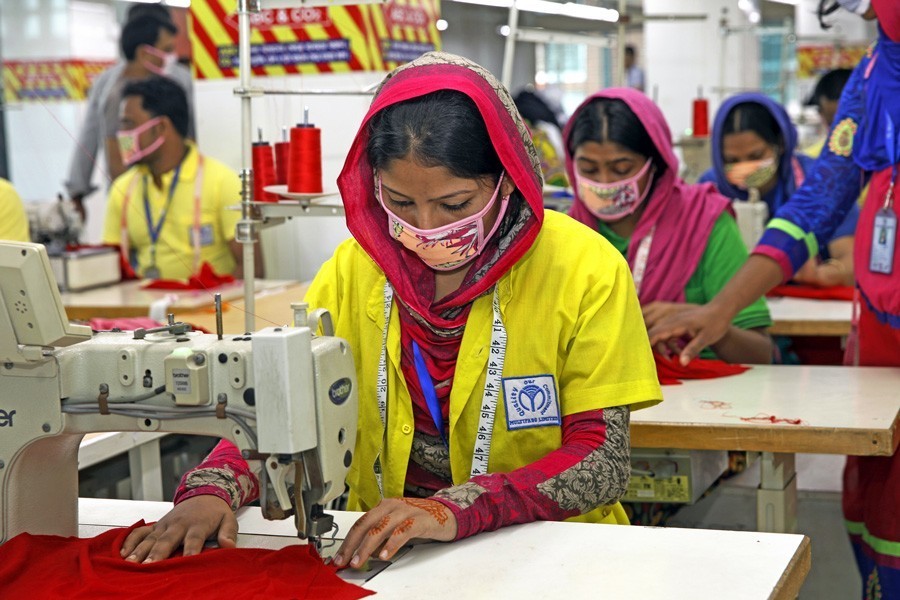Though women workers are dominating the country's readymade garment sector, their scope to go up the ladder is very limited.
Women workers generally do not get the equal chance for promotion in upper positions in their respective factories. Labour leaders, however, maintain that many of the women neither have the desire to go up nor the factory management have their full confidence on female workers.
Moreover, women workers are also found absent in leadership as they are not much interested in union activities.
Female workers opined that they do not have much time as they have to maintain their family and household chores after their long working hours.
Off late, especially after the Rana Plaza building collapse some female garment workers have started exercising their bargaining capacity as elected representatives of their respective factories. Usually there are male representations in the trade union leadership in the garment factory which now, though in a small scale, has started with female workers.
A preliminary survey conducted by a think tank-- Center for Policy Dialogue-however revealed that the proportion of female and male workers in the apparel sector has changed.
The ratio of female and male workers now stands at 60.8:39.2 which was 65:35, according to another survey conducted by the Asian Center for Development (ACD) in 2015. It is widely believed that nearly 80 per cent of the workers in the sector are female.
The CPD survey revealed that share of female employment in upper and middle grades is slowly rising particularly in case of grade III, grade IV and grade V. However, their presence in top grades such as grade I and grade II scanty.
The sewing and finishing sections are still dominated by women with 74.90 per cent and 58.60 per cent, the survey found.
It also revealed that female workers are less knowledgeable about operating different modern machines compared to their male counterparts.
Another watch report conducted by Karmojibi Nari and Care Bangladesh with funding from Austrian Development Cooperation revealed that majority of the surveyed respondent female workers-36.7 per cent-- opined that women workers in the garment factories do never get the promotion opportunity.
Only 18.7 per cent respondents have informed that women get equal opportunity for promotion in their respective workplaces. It also found that 12.7 per cent are not aware of the promotional issue.
The respondents informed that that their promotional opportunities depend on a number of factors including personal relation, employers' perception, and even physical beauty.
It has allegedly been informed that those who can maintain a good relation with the authority get preference for promotion.
Employers' perception towards female workers also responsible for the issue as it allegedly found that the perception is that women are less physically capable to carry load and impose any instruction or rules on other women and that is why they are not chosen for promotion to upper positions in factories.
50.7 per cent surveyed women informed that there is no female supervisors at the workplaces while 16 per cent pointed of having one supervisor and 24 per cent have two supervisors. About 9.3 per cent surveyed factories have three and more women supervisors.
Representation of women in positions of line chief, floor in charge, and production manager is very uncommon.
82 per cent factories have no women line chief, 5.3 per cent and 4 per cent have one and two women line chiefs respectively. About 75.33 factories have no women floor in charge, while 19.33 per cent of the respondents do not know whether any woman performs duty as floor in charge at their workplaces.
With regards to the position of production manager (PM) it has been observed that 88 per cent respondents' workplaces lack woman in this position.
About 9.0 per cent respondents do not know whether the PM is women.
Majority workers claimed that management/factory authority does not take initiative to promote women to upper positions.
On the other hand, 46 per cent have informed that authority takes steps in this regard. There are workers who are not aware whether authority takes any measures.


